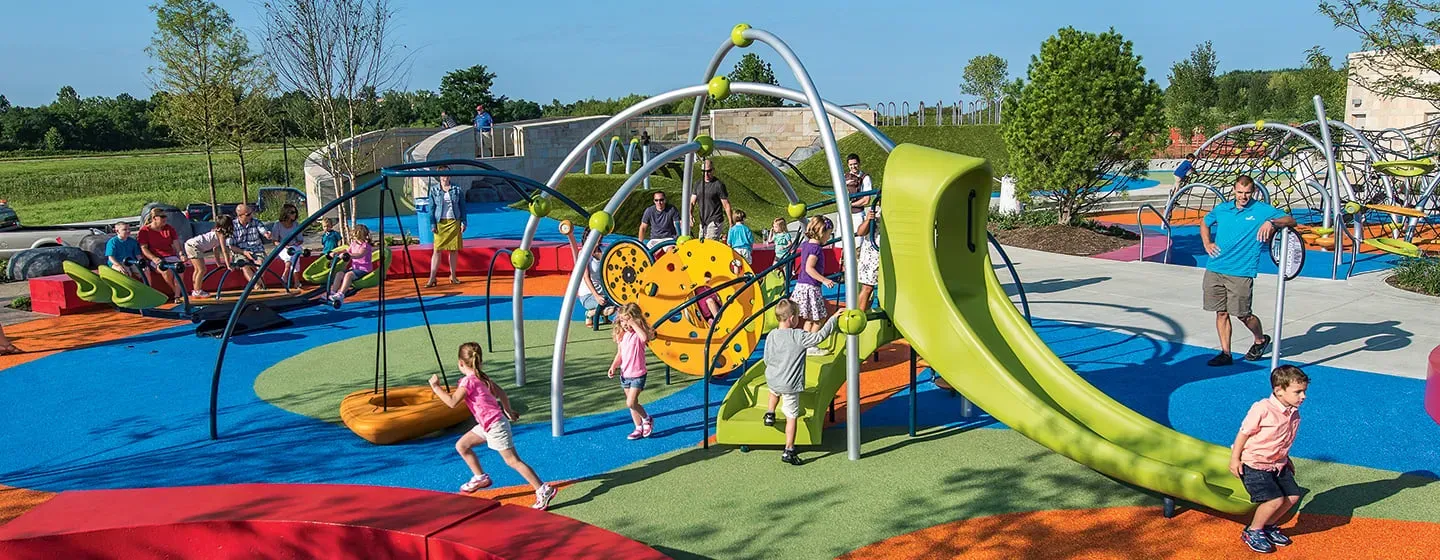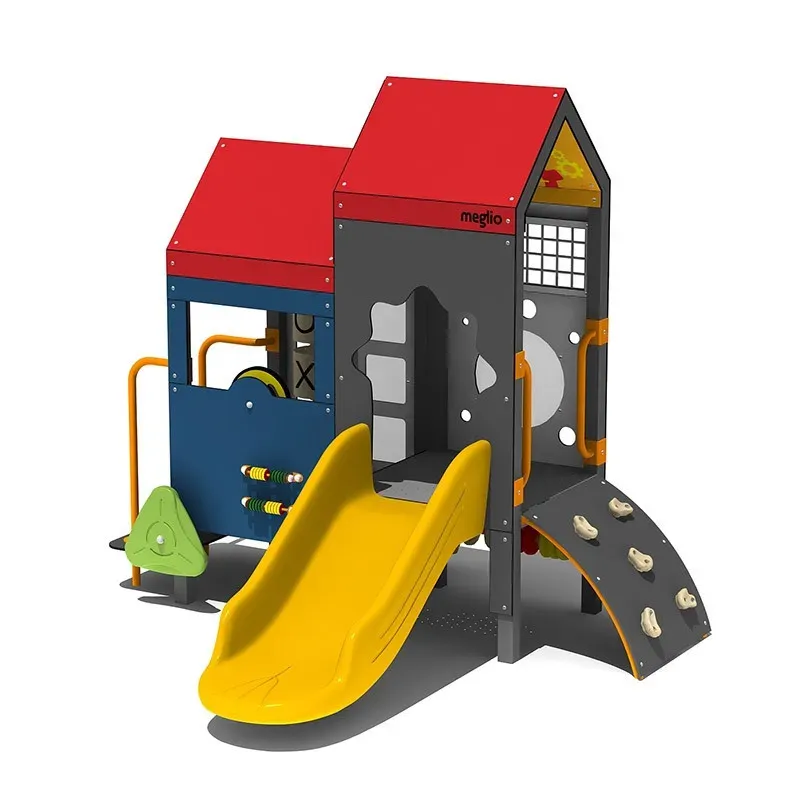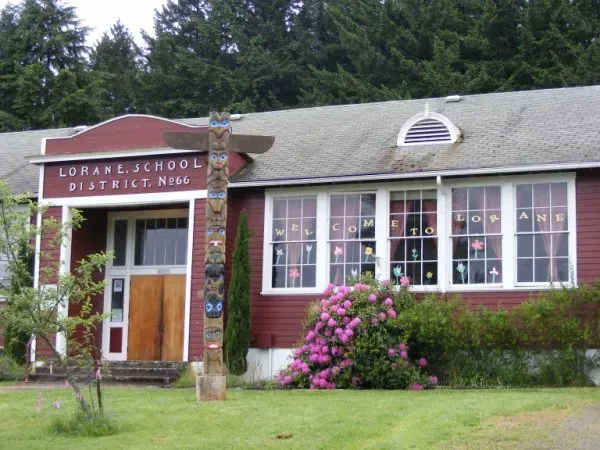Table of Contents
let's talk about playgrounds for the little ones, specifically that whirlwind phase between two and five years old. It's easy to think smaller kids just need smaller slides, but anyone who's supervised a determined toddler on a structure meant for older kids knows that's a recipe for scraped knees and parental anxiety. Choosing the right playground equipment for 2-5 year olds is less about shrinking down adult ideas of fun and more about understanding how these tiny humans learn, move, and explore. Their world is expanding rapidly, and their play space should support that journey safely. We're not just talking about swings and slides here; we're looking at pieces that encourage balance, coordination, dramatic play, and social interaction. Getting this right means creating a place where they can push their limits, gain confidence, and burn off that boundless energy without unnecessary risks. We'll explore the specifics – what types of equipment are actually beneficial, the non-negotiable safety features, and how to build a space that's genuinely engaging for this unique age group.
Why AgeAppropriate Playground Equipment for 25 Year Olds Matters

Why AgeAppropriate Playground Equipment for 25 Year Olds Matters
It's Not Just About Size, It's About Skill
Alright, let's cut to the chase. Thinking any old playground piece will do for a two-year-old just because it's colorful is like giving someone learning to ride a bike a motocross track. It simply doesn't work. Understanding Why Age-Appropriate Playground Equipment for 2-5 Year Olds Matters comes down to recognizing their specific, rapidly evolving capabilities and limitations. At this stage, kids aren't just smaller versions of older children; their balance is wobbly, their depth perception is still developing, and their understanding of risk is, well, minimal. A step that's trivial for a six-year-old is a major climb requiring significant coordination for a three-year-old. Equipment designed for this age group considers these nuances, offering challenges that build skills without introducing unnecessary hazards. It’s about meeting them where they are, not forcing them into spaces they aren't ready for.
Building Bodies and Brains Safely
Properly designed toddler playground equipment isn't just about keeping them from falling off the high dive (which they shouldn't be near anyway). It’s crucial for fostering critical physical and cognitive development. Think low-level climbing structures that help them learn weight transfer and spatial awareness. Consider sensory panels or activity walls that encourage fine motor skills and problem-solving. Preschool play structures tailored to this age group provide just the right amount of challenge to encourage gross motor skills like running, jumping, and balancing, all while building confidence. They learn cause and effect, understand their physical capabilities, and engage in imaginative play, which is vital for cognitive growth. Mismatched equipment, conversely, can be too intimidating, leading to frustration or avoidance, or too easy, offering no developmental benefit.
- Low climbing structures (under 3-4 feet)
- Small slides with gentle slopes
- Tunnel crawlers
- Activity panels (gears, beads, mirrors)
- Spring riders
- Bucket swings (full support)
- Sand and water play areas
Avoiding the Ouch Factor
Let's talk blunt reality: inappropriate playground equipment for 2-5 year olds is a leading cause of playground injuries for this age group. Falls from heights are the most common culprit, and guess what? That tall slide or climbing net designed for older kids is exactly where those falls happen. Equipment scaled for toddlers means lower fall heights and features designed to prevent entrapment hazards – those tricky gaps where little heads or limbs can get stuck. Safety standards exist for a reason, specifically addressing things like spacing, handrail size, and surface requirements based on equipment height and age group. Ignoring these guidelines because a piece *looks* okay for a small kid is just asking for trouble. Prioritizing age-appropriate design is the simplest, most effective way to mitigate preventable accidents and ensure playtime stays fun, not frightening.
Essential Types of Playground Equipment for 25 Year Olds

Essential Types of Playground Equipment for 25 Year Olds
Slides and Climbers Built for Little Legs
so you're building a spot for the preschool crowd. You absolutely need the right essential types of playground equipment for 2-5 year olds. Forget those towering tube slides that look like something out of a sci-fi movie trailer. For this age group, slides need to be low, maybe three to four feet max at the platform, with a gentle slope and a nice run-out at the bottom so they don't land with a thud. The steps up should be wide and shallow, with sturdy handrails sized for small grips. Climbers? Think small, accessible challenges. We're talking about maybe two or three steps up to a platform, perhaps a small ramp with a rope assist, or a tiny rock-climbing wall with widely spaced, easy-to-grab holds. The goal is to build confidence and coordination, not train future Everest climbers. They need to feel successful, not terrified.
Swings, Sand, and Sensory Stuff
Beyond the basics, you need variety. Swings are a must, but for the 2-5 crowd, that means bucket swings with full body support. They feel secure, and you don't have to worry about them tumbling out. Traditional belt swings are generally too tricky for this age group; their balance isn't there yet. Sand and water play areas are goldmines for sensory exploration and imaginative play – just make sure they're easily accessible and have some shade. Activity panels mounted at their height are also key. These aren't just busywork; they help develop fine motor skills, introduce concepts like cause and effect (spinning gears, moving beads), and offer quieter, focused play options amidst the bigger movements. These are the pieces that round out the space and provide different ways for kids to engage.
What's one piece of equipment you see on playgrounds for older kids that you absolutely know shouldn't be on one for toddlers?
Safety First: What to Look for in Playground Equipment for Toddlers and Preschoolers

Safety First: What to Look for in Playground Equipment for Toddlers and Preschoolers
Checking the Foundation: Surface and Structure Safety
let's get serious for a minute because safety isn't optional, especially when we're talking about tiny humans still figuring out gravity. When you’re evaluating playground equipment for 2-5 year olds, the ground they land on is just as important as the structure itself. Concrete or asphalt under a slide is a non-starter, full stop. You need impact-absorbing surfacing. We're talking engineered wood fiber, rubber mulch, poured-in-place rubber, or safety mats. The depth of this material matters too, directly correlating to the height of the equipment. A fall from four feet onto insufficient surfacing can still cause a serious head injury. Beyond the surface, look at the bones of the equipment. Is it sturdy? Are there any visible cracks, rust, or wobbly parts? Anchoring is critical – you don't want a piece tipping over. Check for sharp edges or exposed bolts. These are the basics, the non-negotiables for ensuring Safety First: What to Look for in Playground Equipment for Toddlers and Preschoolers.
Avoiding the Traps: Entrapment and Pinch Points
Beyond the big falls, the devil's in the details when it comes to keeping little ones safe. Toddlers and preschoolers are explorers, and they'll stick their heads, arms, and fingers into anything. That's where entrapment and pinch points become a major concern. Any gap on the equipment should be either too small for a child's head to enter (less than 3.5 inches) or large enough for it to pass through freely (greater than 9 inches). Anything in between is a potential death trap. Check for spaces where clothing drawstrings or bike helmets could get caught – horrifying, I know, but it happens. Moving parts, like swings or seesaws, need to have mechanisms that prevent little fingers from getting pinched or crushed. Handrails and barriers should be designed so a child can't easily slip underneath or through them. Paying attention to these seemingly small details is crucial for truly safe playground equipment for 2-5 year olds.
Creating an Engaging Play Space with the Right Equipment
Beyond Basic Function: Fueling Imagination and Interaction
so you've got the safe stuff sorted – low slides, secure swings, soft landing zones. That's the foundation, but it's not the whole story. Creating an Engaging Play Space with the Right Equipment means selecting pieces that do more than just facilitate gross motor skills. You want elements that spark imagination and encourage kids to play *together*. Think about multi-level structures, even small ones, that have nooks, crannies, and platforms. These aren't just climbing challenges; they become pirate ships, castles, or secret hideouts. Incorporate tunnels for crawling and peek-a-boo. Look for panels with interactive elements – not just gears, but maybe speaking tubes they can talk through, or sections that allow for sand or water to be poured and manipulated. The equipment should invite different types of play simultaneously: some kids might be climbing, others in a 'house' area below, and others digging in sand nearby. Variety isn't just the spice of life; it's the fuel for sustained engagement on the playground.
Layering the Experience: Arrangement and Added Elements
It's not just the pieces themselves, but how you arrange them. Plunking everything down in a straight line isn't exactly inspiring. Think about creating zones or flow. Maybe a quieter area with sensory panels and sand is separate from the more active climbing and sliding zone. Consider pathways between equipment that encourage movement and exploration. And don't stop at the fixed structures. The most engaging spaces often incorporate elements that aren't traditionally 'playground equipment.' Integrating natural elements – like small hills to roll down, logs to balance on (safely), or planting areas – adds texture and different sensory experiences. Providing 'loose parts' like large blocks, fabric scraps, or even just buckets and shovels for the sand area allows kids to manipulate their environment and invent their own games. This layering of experiences is crucial for Creating an Engaging Play Space with the Right Equipment that keeps kids coming back day after day.
Making Playtime Count for the Little Crowd
So, there you have it. Picking playground equipment for 2-5 year olds isn't rocket science, but it does require a bit more thought than just grabbing the first colorful thing you see. It's about providing challenges that build skills, not just obstacles that cause bumps. Focus on the basics: things they can climb safely, slide down without face-planting from too high, swing on with support, and interact with using their burgeoning imaginations. Prioritize sturdy construction and surfaces that forgive the inevitable tumbles. Get it right, and you're not just installing plastic and metal; you're setting up a stage for crucial physical development, social learning, and countless moments of genuine, unadulterated joy. Get it wrong, and well, you'll be spending a lot more time applying bandages.